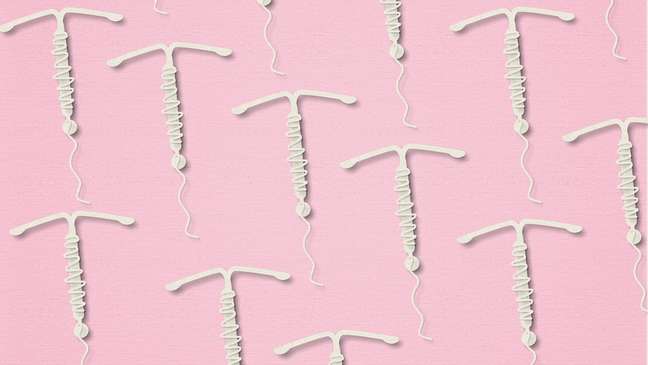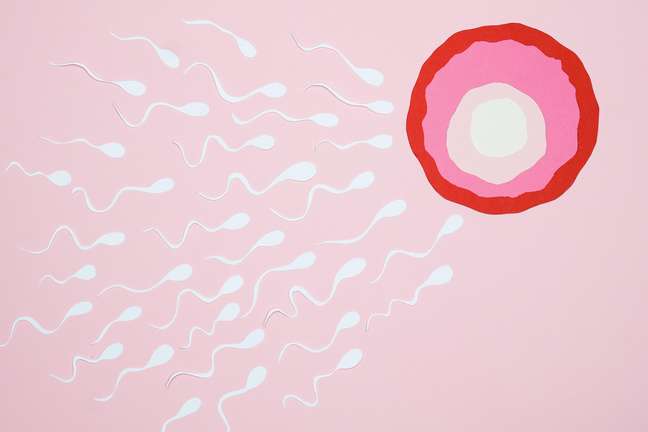The intrauterine device is long-lasting and has few side effects, but is still underutilized by Brazilian women. Doubts on the subject
Despite being one of the most effective contraceptives with few side effects, intrauterine device, known as an IUDit has a low usage rate in Brazil. According to a survey by the Ipsos Institute, 58% of the female public prefer the pill, while only 8% said they opt for the IUD. Misinformation and myths are some of the main reasons for unpopularity. According to a study by the School of Nursing of Ribeirão Preto, University of São Paulo (USP), the interest in using the method is greater among younger women, with a higher level of education, with health insurance, single, without children and with a wider repertoire on the subject. It is important, therefore, to demystify the argument in order to broaden its scope.

With this in mind, we asked the gynecologist and obstetrician Victória Gontijo, specialized in pre-conception, prenatal, delivery and postpartum, at the Pregnant Women’s Health Clinic of Theia (SP), to help better understand what the IUD is and how it works: “The intrauterine device is a highly effective and long-lasting reversible contraceptive method with relatively few contraindications”, explains. It is a small T-shaped object which, when placed in the uterus, does not prevent ovulation, but produces effects which make pregnancy impossible.
Hormonal vs non-hormonal IUD: the differences
There are different types of IUDs and they can be divided into those that work without or with hormones.. “The hormonal IUD mainly acts on the mucus of the cervix, making it difficult for the sperm to go back up to the uterus. The non-hormonal IUD works with a local reaction inside the uterus, which has a toxic effect on the sperm,” says the doctor.
The hormonal version (known on the market by names such as Mirena IUD and Kyleena IUD) locally and in a controlled manner releases a hormone called levonorgestrel, which makes the cervical mucus thicker, which prevents the passage of sperm. Furthermore, it hinders the growth of the endometrium, which is the inner lining of the uterus, where the embryo would settle for the development of a possible pregnancy. Its effectiveness is slightly higher, at 99.8%.
The non-hormonal option, the copper IUD – material that alters male and female gametes and inhibits endometrial enzymes, decreasing sperm mobility – also has a high contraceptive success rate, 99.2%.
One of the biggest advantages is that, once you put it on, you don’t have to remember to “put it on”. (It is very common, for example, for women to forget to take the pill on the correct days, which leads to contraceptive failures). Interestingly, the hormonal IUD is effective for about 5 years. The copper one, up to 10 years. After this time, Victoria advises that the device needs to be replaced.
There is yet another version of the copper IUD that also contains silver. The mechanism of action is the same. “The silver has been inserted to give greater stability to the copper and to prevent it from fragmenting,” says the specialist. “It was an attempt to reduce the adverse effects of the copper IUD, especially the increased cramping and blood flow that can occur in the first few cycles after insertion. However, more studies are still needed to be sure of superiority. of the silver IUD versus the copper-only IUD,” she adds.
Side Effects: Gaining IUD?
One of the myths about the side effects caused by the IUD is that it would affect body weight gain. A review of various scientific research on the topic by the National Collaborating Center for Women’s and Children’s Health in the United States found no evidence of an association between the two. “IUD use showed no relationship to weight gain, regardless of type”says the gynecologist.
Another point that ends up creating confusion on the subject is the statement that the method is only indicated for women who no longer wish to have children, as it would damage fertility. This is also not true. Neither copper nor the hormonal IUD interferes with ovulation. So, theoretically, in the first month after the device is removed, if you have sex, the sperm will already have a clear path to find the eggs and fertilize them. Scientific studies have shown that between 80 and 90% of couples are able to conceive within a year of IUD removal. “As soon as she decides to start trying to conceive, the woman can ask the doctor to withdraw. The ideal is to undergo a pre-conception consultation first,” recommends Victoria.

What about menstruation?
It may or may not be impacted depending on the woman. “The non-hormonal IUD tends to affect this less. Sometimes it can also increase the flow and cramping a bit, especially in the first few months. The hormonal IUD, on the other hand, has a different effect: it often works by reducing blood flow and cramping, and can lead to a long period without bleeding,” explains the doctor.
Is IUD use risky?
According to the gynecologist, there are chances of intercurrences, but they are rare. “During insertion, there is a small risk of uterine perforation (1 in 1,000 insertions). However, it decreases when the procedure is done carefully and with proper technique,” she exemplifies.
How is the IUD inserted?
Precisely to minimize the possibility of occurrences such as drilling or bad positioning, the insertion of the IUD must be performed by a specialized doctor. “It’s a simple procedure that can be done in the office,” says Victoria. “A speculum is inserted into the vagina, the region is cleaned, the cervix is visualized and clamped. Next, the practitioner takes a measurement of the uterus and then inserts the IUD through the cervix. The thread is cut,” she details.
This thread is a part that lies 1 to 2 centimeters outside the uterus, in the vagina. “You don’t need to do an ultrasound after that. Just do the gynecological exam and visualize the IUD thread in place, as a routine follow-up,” she indicates.
The device can be placed at any time in the woman’s life, even immediately after delivery. After insertion, no bed rest is required and the patient can return to normal daily activities. The Ministry of Health recommends that, during the first seven days, if intercourse occurs, the person uses other methods, such as condoms, as it is a period of adaptation for the body.
Can every woman use an IUD?
Contraindications are few. According to Victoria, women who can’t use an IUD are those who have a condition, such as fibroids, that can alter the internal cavity of the uterus and make insertion difficult.
If the patient has any structural abnormality that changes the shape of the uterus, if she has cervical cancer, a severe infection, or experiences copper allergy (in the case of the copper IUD) or allergy to levonorgestrel (in the case of the hormonal IUD), also use is not recommended. All of this needs to be evaluated by your doctor.
How much does it cost to get an IUD?
The copper IUD placement is offered free of charge in the public health network. Simply search for the UBS closest to your home, with gynecology service, to schedule an appointment and the procedure, post-evaluation. In general, SUS doctors recommend that women attend family planning groups first, to better understand what contraceptive methods exist and the advantages and disadvantages of each, before choosing the best one for her – although this is optional.
Health plans also usually have coverage. “The particular values vary a lot, however, the price of the hormonal IUD is higher than the copper or copper-silver IUD,” says the specialist. On average, the copper and copper with silver versions cost between R$ 150 and R$ 500. The hormonal versions cost between R$ 800 and R$ 1,300, approximately. Also, there is the amount of medical bills.
+The best content in your email for free. Choose your favorite Terra newsletter. Click here!
Source: Terra
Ben Stock is a lifestyle journalist and author at Gossipify. He writes about topics such as health, wellness, travel, food and home decor. He provides practical advice and inspiration to improve well-being, keeps readers up to date with latest lifestyle news and trends, known for his engaging writing style, in-depth analysis and unique perspectives.








